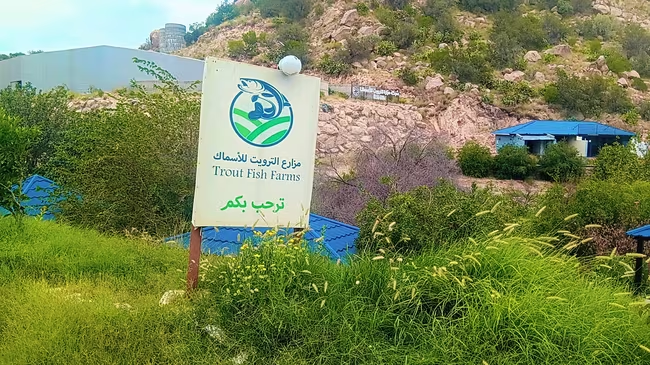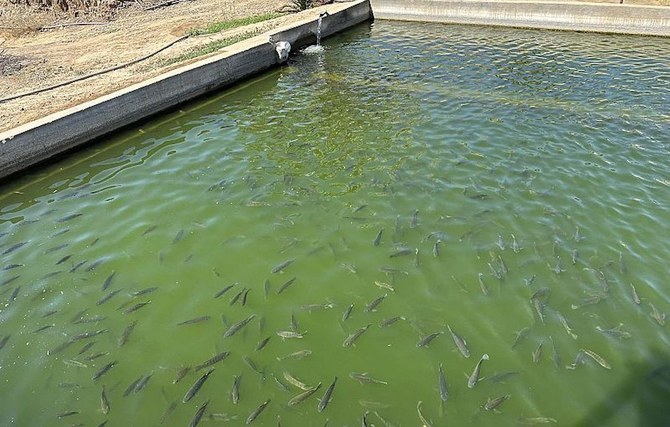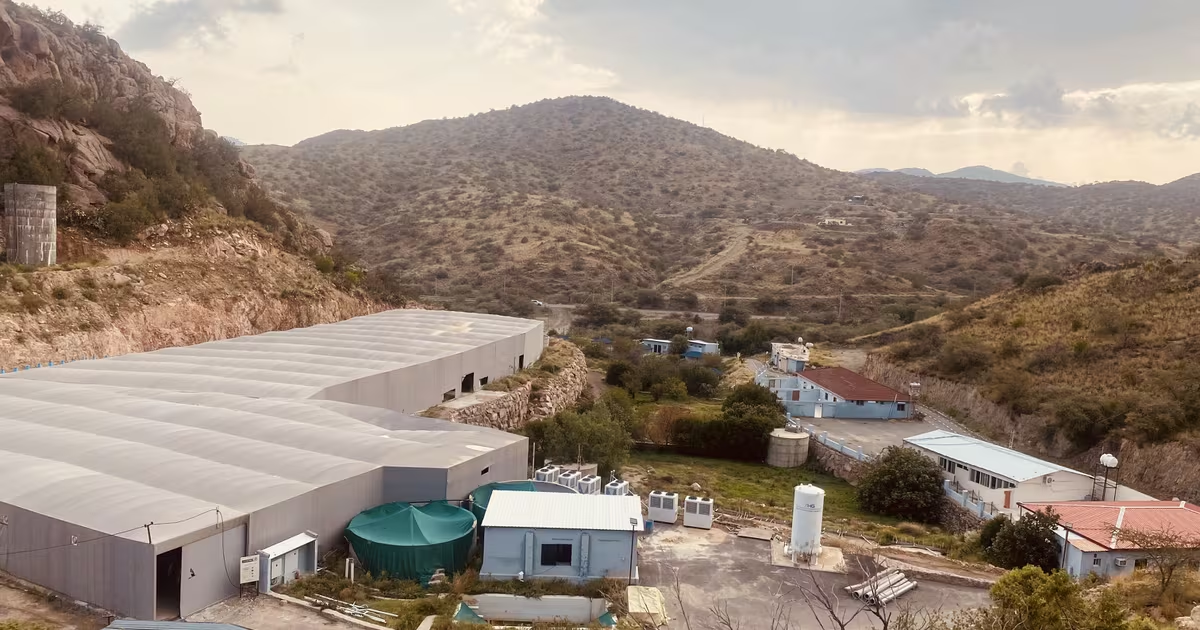Saudi Arabia is set to take a giant leap in aquaculture with the development of a 5,000 tonne trout farm. This ambitious initiative reflects the country’s growing commitment to food security, sustainable agriculture, and economic diversification. Traditionally known for its desert landscapes and arid climate, Saudi Arabia is redefining its relationship with water-intensive industries by investing in modern fish farming technologies.
The establishment of such a large-scale trout farm will mark a transformative milestone in the Kingdom’s food production sector. It will not only introduce fresh and locally sourced fish to the market but also create employment opportunities, boost local economies, and encourage technological innovation in aquaculture practices.
Strategic Vision Behind the Project
The Kingdom’s strategic vision revolves around reducing dependency on imported food and increasing local production. By cultivating trout on a commercial scale, Saudi Arabia can significantly reduce the cost of fish for domestic consumption while providing a sustainable source of protein.
This initiative aligns with broader national goals, including Vision 2030, which emphasizes economic diversification, self-reliance in essential commodities, and the development of innovative industries. A 5,000 tonne trout farm represents more than just a business venture; it embodies the nation’s commitment to modernizing its agricultural and aquaculture sectors in a sustainable and impactful manner.
Advanced Technology and Sustainable Practices
Modern trout farming requires advanced technology, and the Kingdom is prepared to leverage state-of-the-art aquaculture systems. These include recirculating aquaculture systems (RAS) that allow fish to be raised in controlled environments with minimal water usage. Such systems not only conserve water but also ensure optimal growth conditions for the trout, maintaining high-quality standards throughout the production process.
Sustainability is a key consideration for this farm. By implementing eco-friendly feeding practices, monitoring water quality rigorously, and adopting energy-efficient technologies, the project aims to minimize environmental impact. This approach demonstrates Saudi Arabia’s commitment to integrating sustainability into large-scale food production initiatives.

Economic Impact and Job Creation
The establishment of a 5,000 tonne trout farm is expected to generate significant economic benefits. Large-scale aquaculture projects require a diverse workforce, including fishery experts, engineers, technicians, and logistics personnel. This creates numerous direct and indirect employment opportunities, contributing to regional economic growth.
Additionally, the project will stimulate ancillary industries such as fish processing, packaging, transportation, and retail. The ripple effect of this farm extends beyond aquaculture itself, promoting broader industrial growth and business opportunities in related sectors.
Ensuring Food Security
One of the primary motivations behind the trout farm is to enhance food security in Saudi Arabia. Currently, the Kingdom relies heavily on imported seafood to meet domestic demand. By producing trout locally, the farm will provide a reliable source of high-quality fish throughout the year, reducing vulnerability to global supply chain disruptions.
The consistent availability of trout will also improve the nutritional quality of the Saudi diet, providing a rich source of protein, omega-3 fatty acids, and essential vitamins. This aligns with national health objectives and contributes to the overall well-being of the population.
Training and Knowledge Transfer
A project of this scale requires expertise, and knowledge transfer will be a crucial element. Saudi Arabia plans to collaborate with international aquaculture specialists to ensure the adoption of best practices in fish farming. Training programs for local staff will enhance technical skills and foster a new generation of aquaculture professionals.
This focus on education and capacity-building will create long-term benefits, allowing Saudi Arabia to sustain and expand its aquaculture initiatives while fostering innovation in related fields.
Challenges and Solutions
Developing a trout farm in a desert environment comes with unique challenges. Water scarcity, temperature control, and disease management are significant considerations. However, advanced aquaculture technologies and careful planning can overcome these obstacles.
Recirculating aquaculture systems, climate-controlled tanks, and continuous health monitoring systems will ensure optimal growth conditions for the trout. By addressing potential challenges proactively, the project aims to achieve maximum efficiency and profitability while maintaining high animal welfare standards.

Market Potential and Consumer Benefits
The introduction of locally farmed trout offers considerable market potential. Consumers will benefit from fresh, high-quality fish at more affordable prices, while local retailers and restaurants gain access to a consistent supply.
In addition, the farm’s output could support Saudi Arabia’s export ambitions, opening up opportunities for regional trade. High-quality trout produced under controlled and sustainable conditions will be a competitive offering in both domestic and international markets.
Environmental Considerations
Sustainability lies at the heart of this project. Careful management of water resources, minimal reliance on chemicals, and eco-friendly waste management systems will mitigate environmental impact.
By demonstrating that large-scale aquaculture can coexist with environmental responsibility, Saudi Arabia sets a model for other countries in arid regions. The farm will serve as a benchmark for responsible fish production, balancing economic growth with ecological stewardship.
Innovation and Research Opportunities
A 5,000 tonne trout farm also provides an opportunity for research and innovation. Scientists and technicians can study fish behavior, nutrition, and disease management in controlled settings, leading to new insights and improvements in aquaculture practices.
This research can be shared globally, positioning Saudi Arabia as a hub for aquaculture innovation in the Middle East. Long-term studies may also contribute to enhanced breeding techniques, improved feed efficiency, and sustainable production methods.
Community and Regional Development
Beyond its economic impact, the farm will positively influence surrounding communities. By providing jobs, supporting local suppliers, and investing in infrastructure, the project will stimulate regional development.
Community engagement initiatives, including educational tours and awareness programs about sustainable aquaculture, will foster a deeper understanding of modern fish farming practices. These efforts help create a supportive ecosystem around the farm, ensuring long-term success and community buy-in.
Vision for the Future
The 5,000 tonne trout farm represents a broader vision for Saudi Arabia: a future where innovation, sustainability, and economic growth intersect. By investing in large-scale aquaculture, the Kingdom demonstrates its readiness to embrace new industries and transform traditional perceptions of agriculture.
This project is not just about producing fish; it symbolizes ambition, resilience, and the power of forward-thinking strategies in building a more self-reliant and prosperous nation.
Conclusion
Saudi Arabia’s initiative to develop a 5,000 tonne trout farm marks a new era in the Kingdom’s aquaculture and food production journey. It combines innovation, sustainability, and economic foresight to create a project that is as socially impactful as it is commercially viable.
By addressing challenges with modern technology, investing in human capital, and focusing on environmental responsibility, the Kingdom is setting a benchmark for large-scale aquaculture in arid regions.
This trout farm embodies the future of Saudi food security, positioning the country as a leader in sustainable aquaculture while delivering fresh, high-quality fish to its population. It is a project that reflects ambition, innovation, and the unwavering drive to transform challenges into opportunities.
Do follow Gulf Magazine on Instagram.
Also Read – How Saudi Arabia’s Vision 2030 is Transforming Modern Lifestyle



